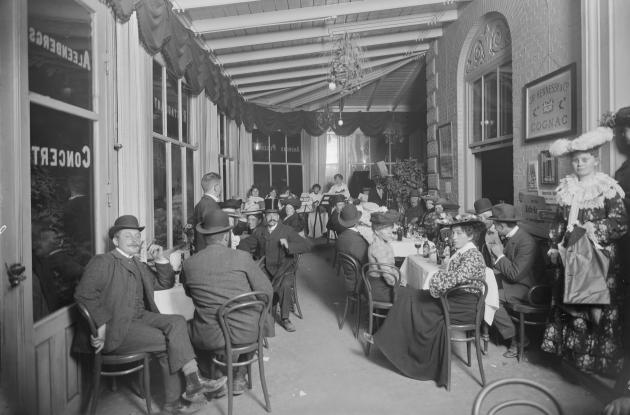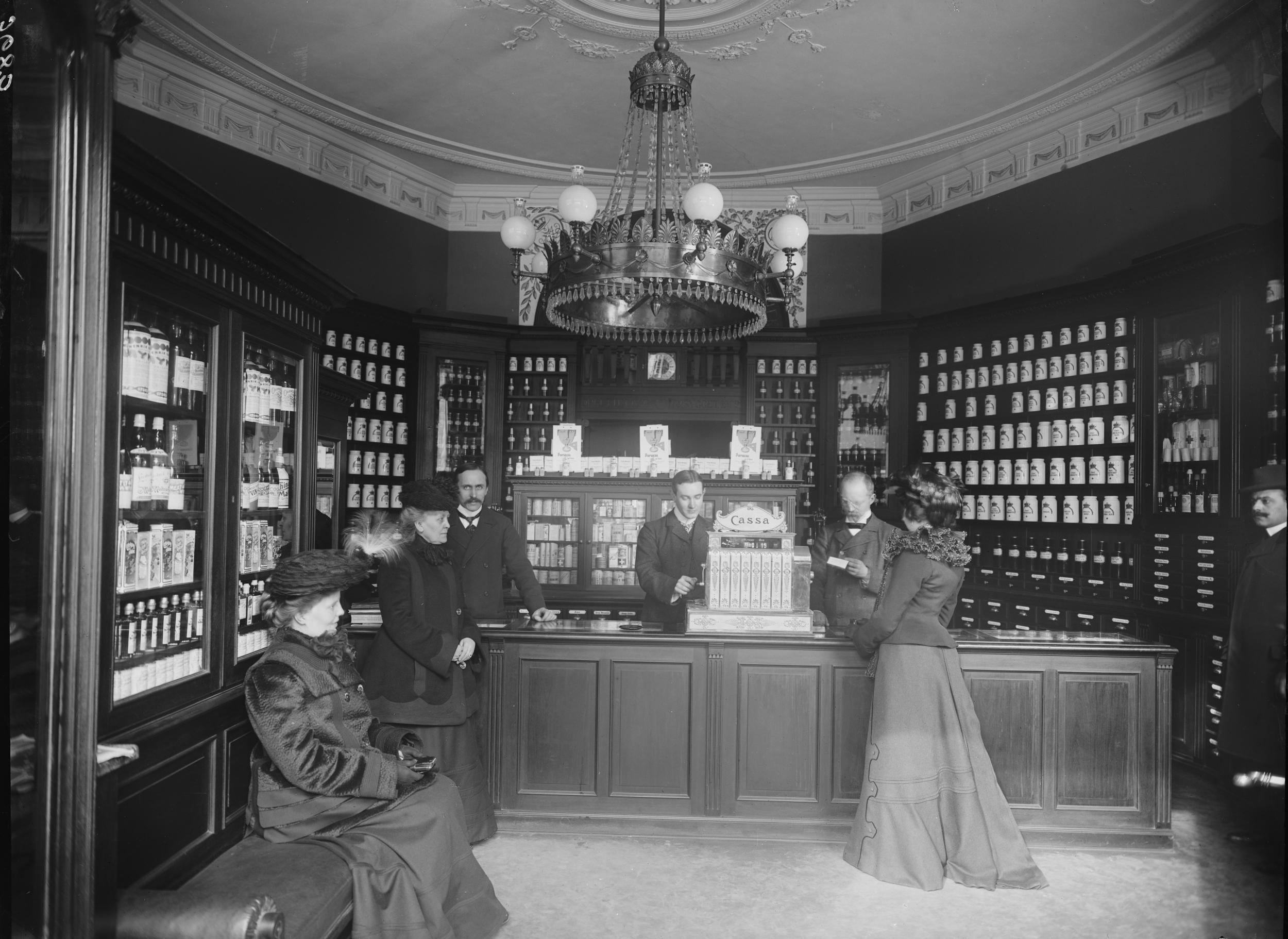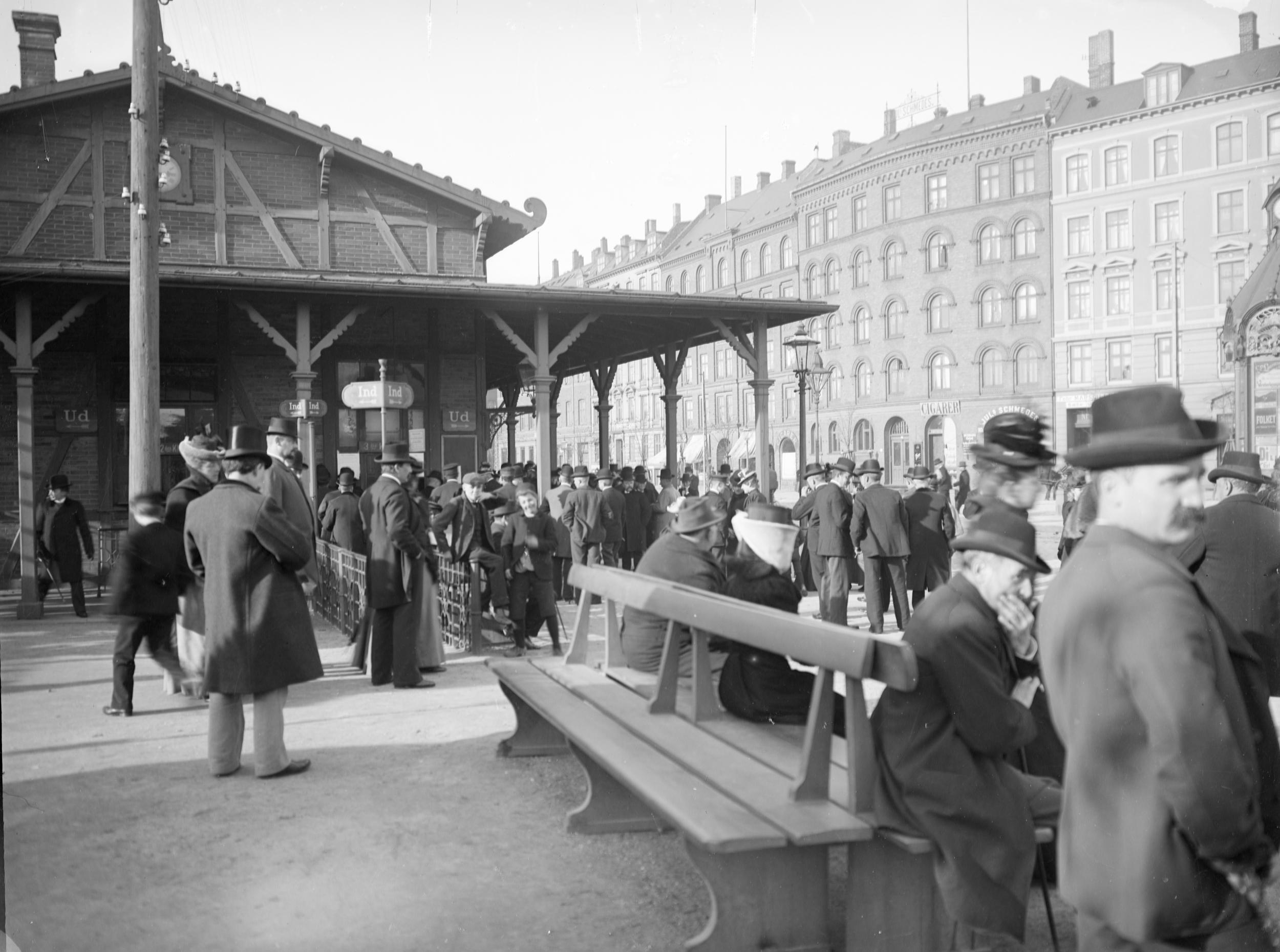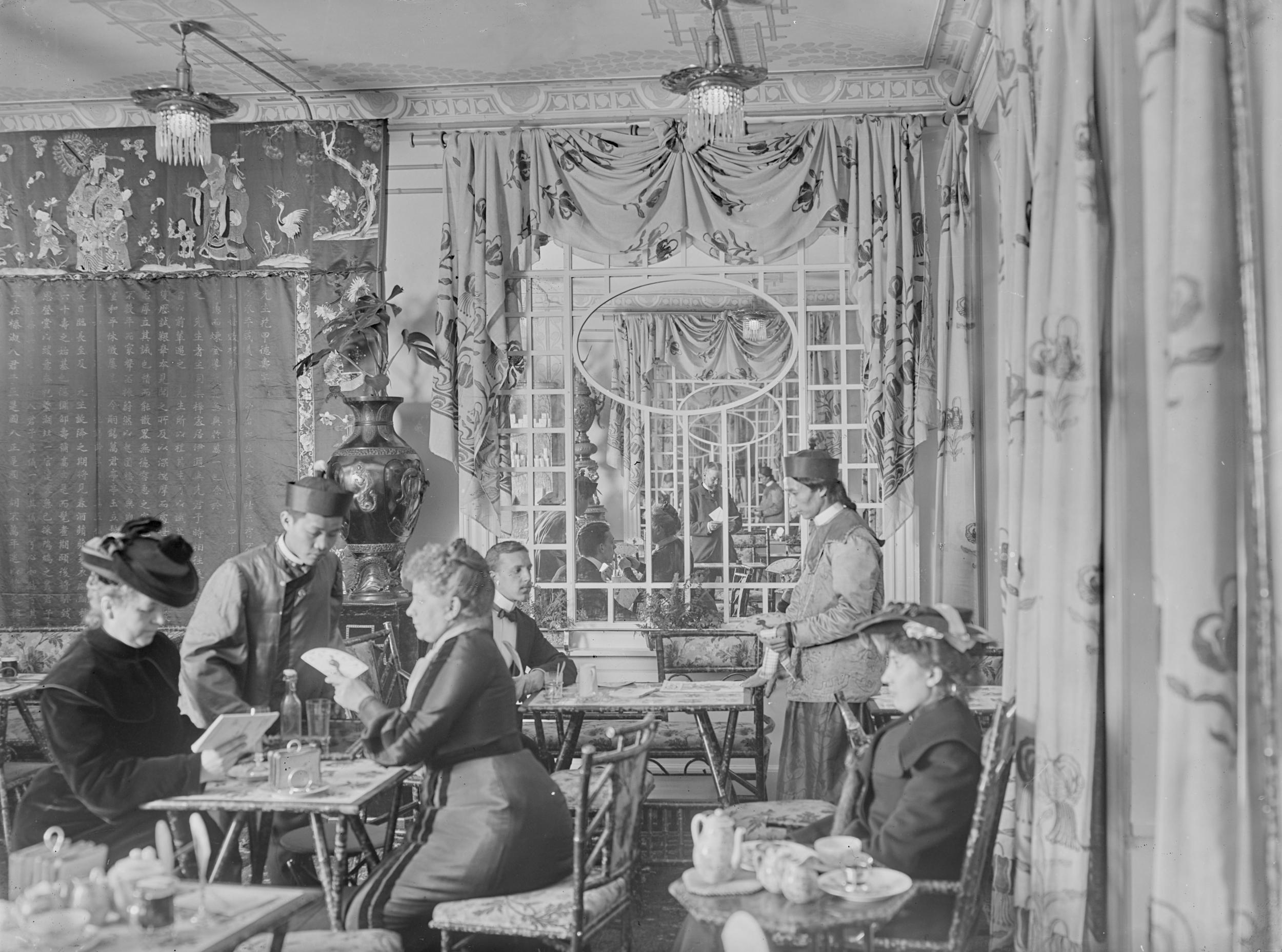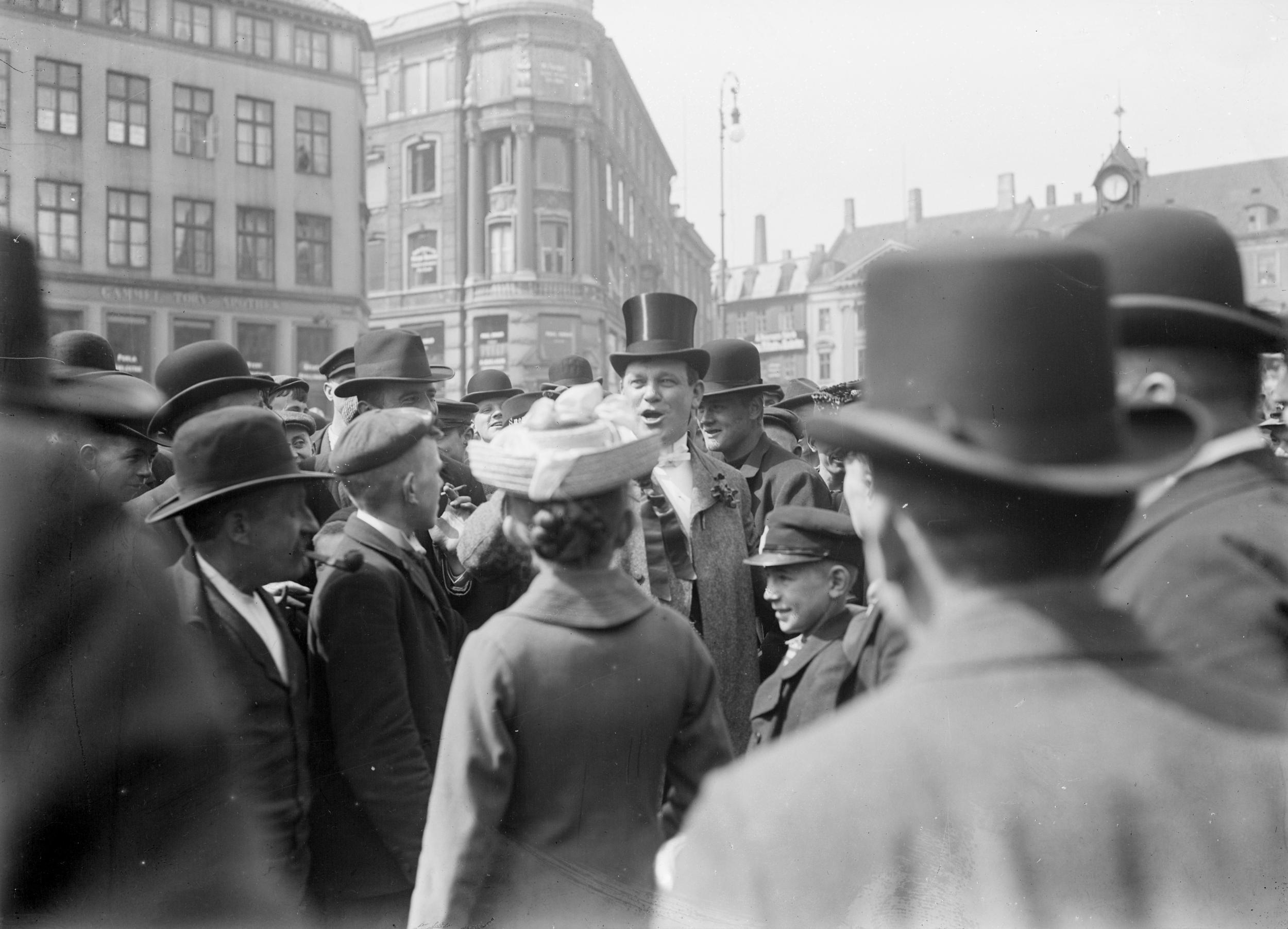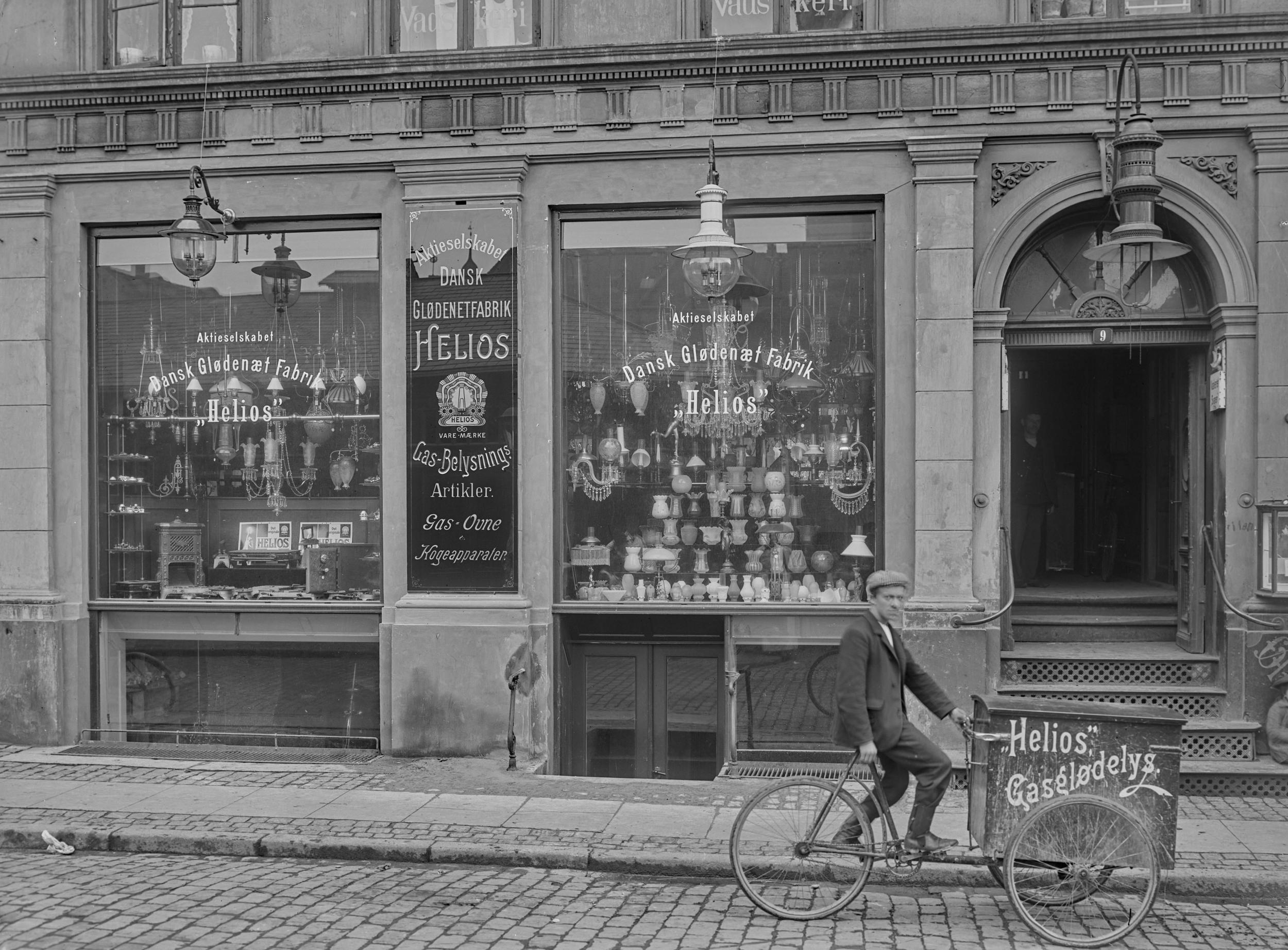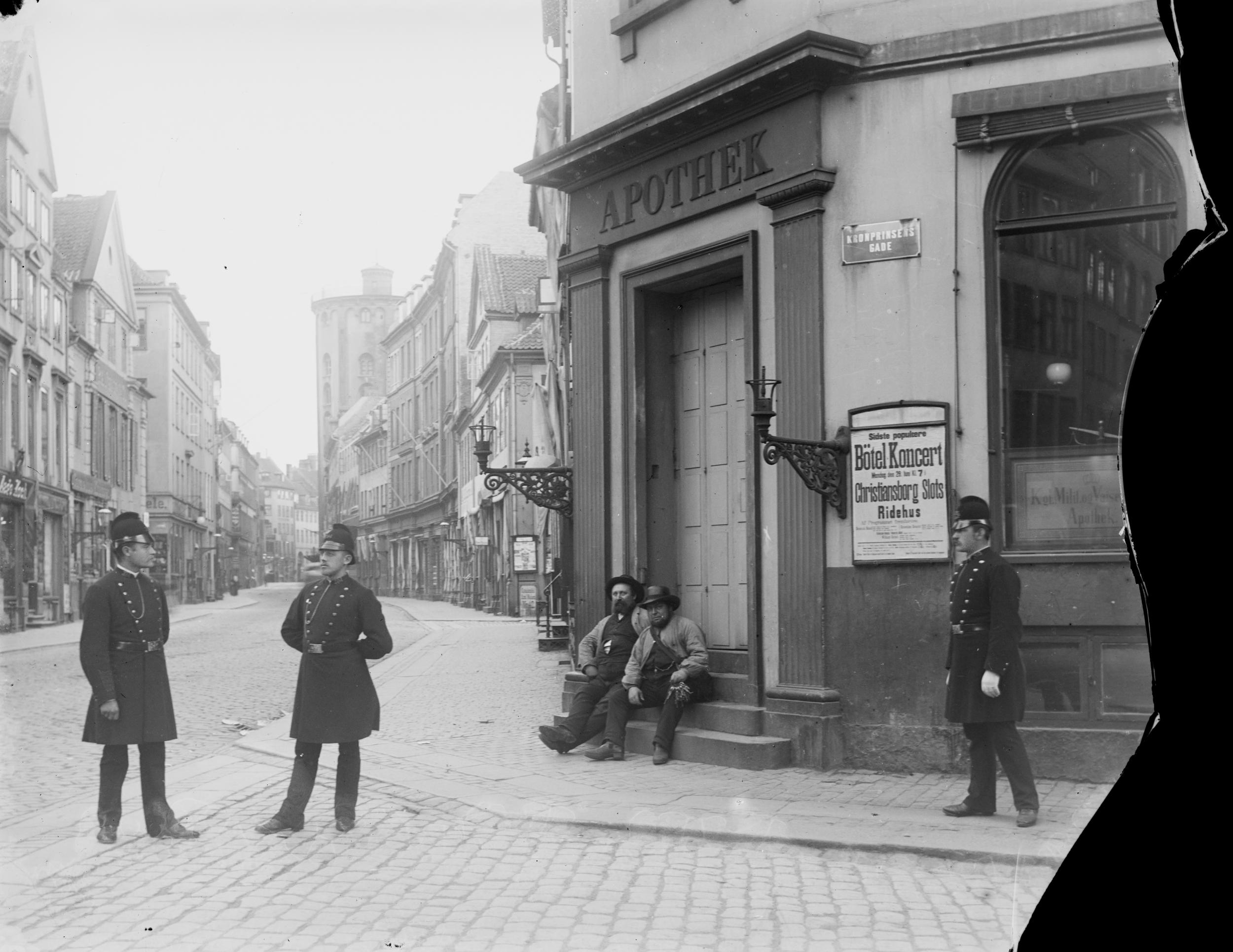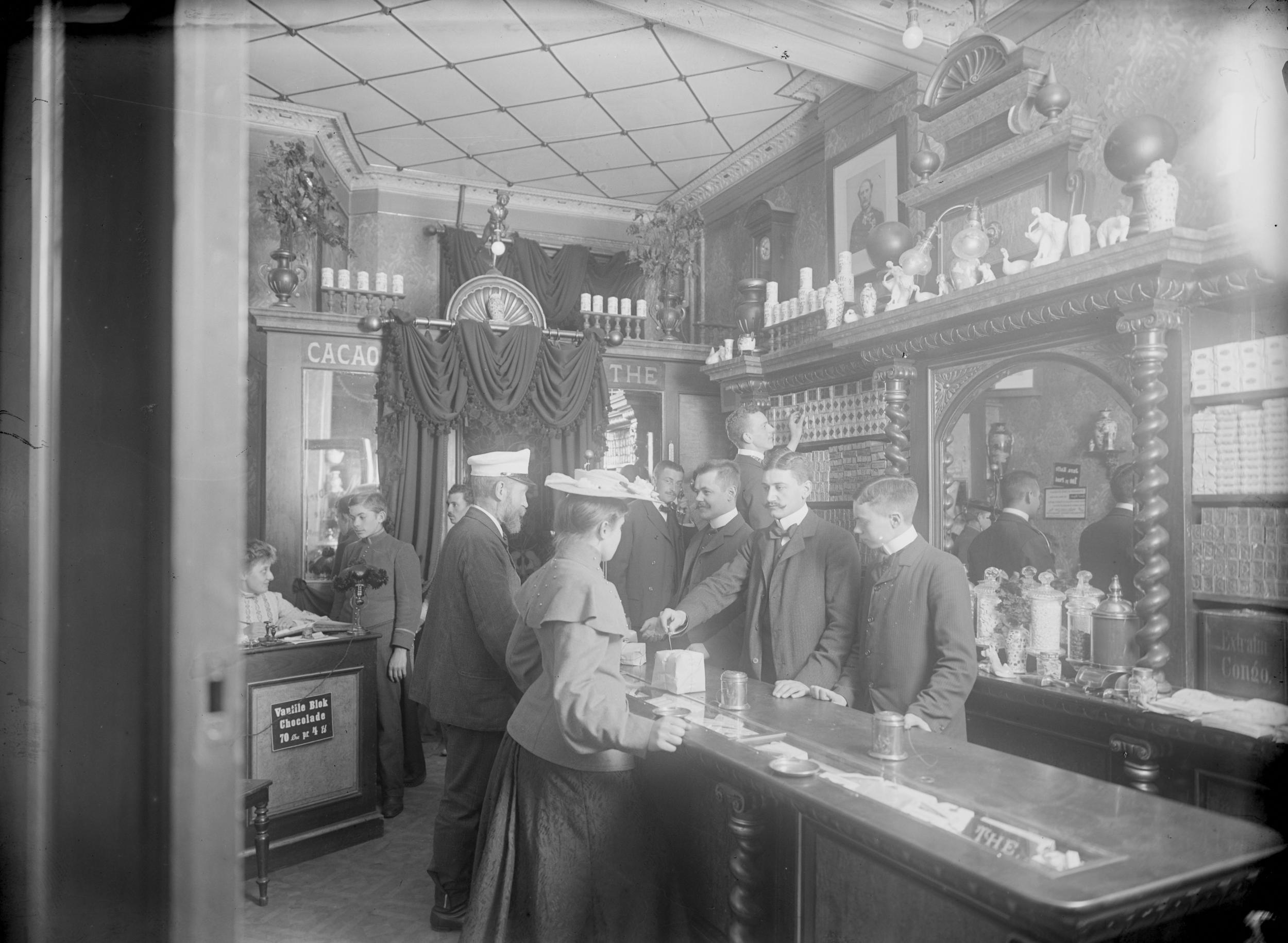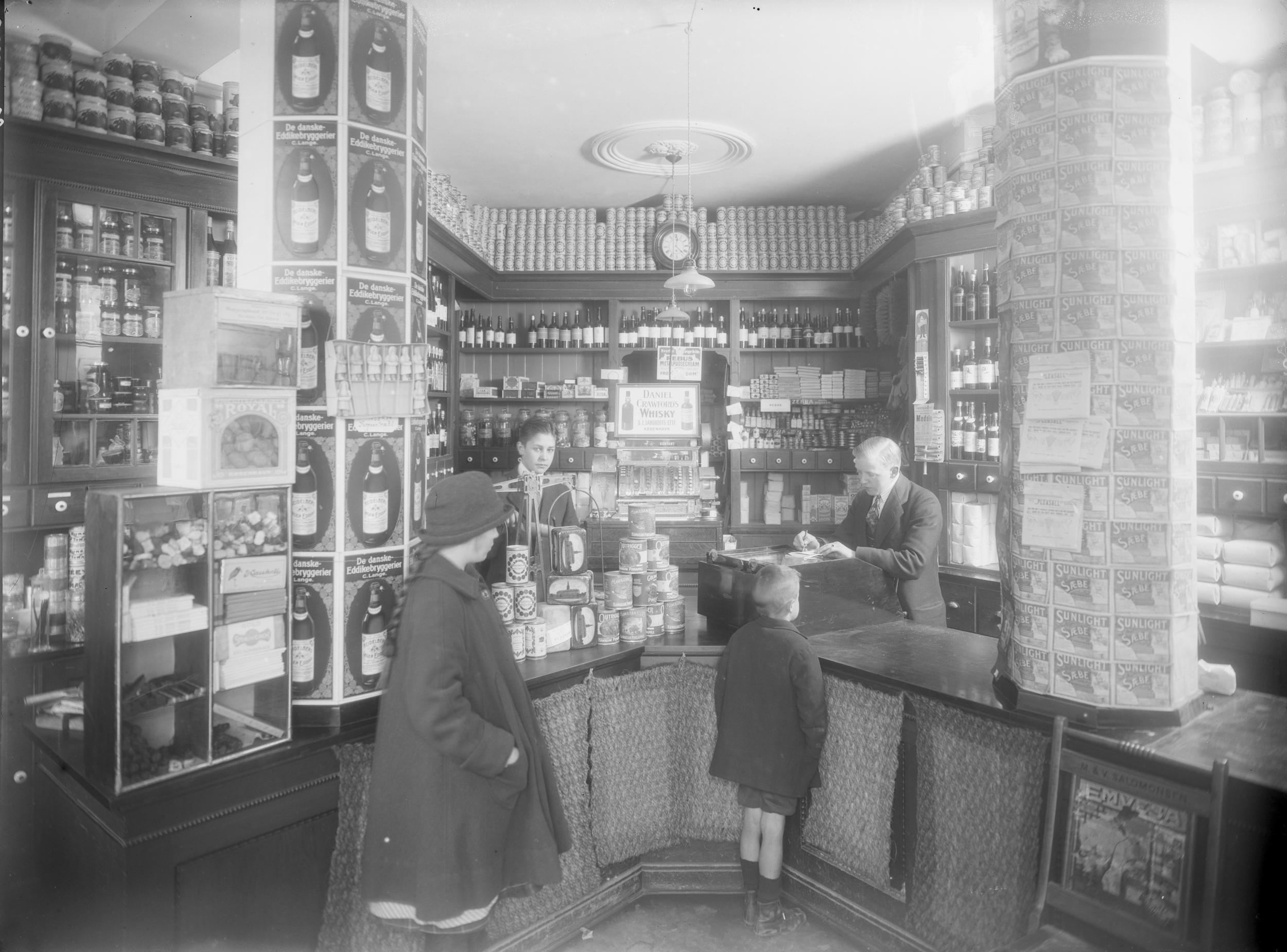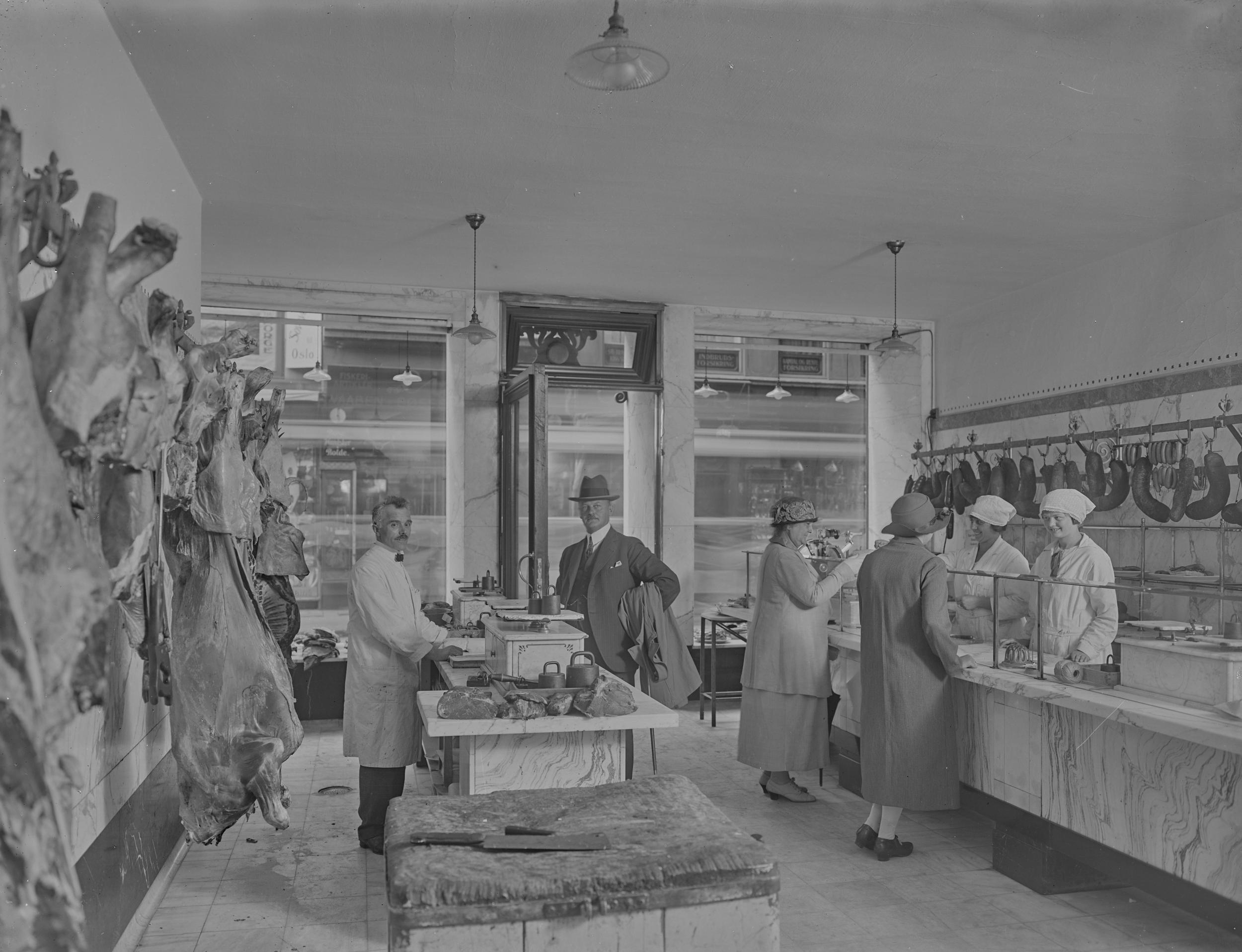The city through the lens
Through Elfelt's many photographs, one can get a good look at the cityscape of the time. Come along for a visit to the hairdresser, to the corset shop and to lunch at the Anti Automat Café.
Peter Elfelt, like other photographers of the time, had a studio with palm trees, centrepieces and scenography. But he also took many pictures in the city streets. Outside the studio there was more light and it was therefore easier to photograph. The camera was still big and heavy, yet it managed to get fantastic pictures of street and shop life.
Come inside the hairdresser's
The employees of the hairdresser's have put their hair up in various elaborate hairstyles with braids and buckles, and the customers must have a similar treatment. You did not wear your hair down if you were part of the bourgeoisie. It is really a big deal that the woman in the foreground has allowed herself to be photographed with her hair out of coiffure. It was associated with poverty and prostitution.
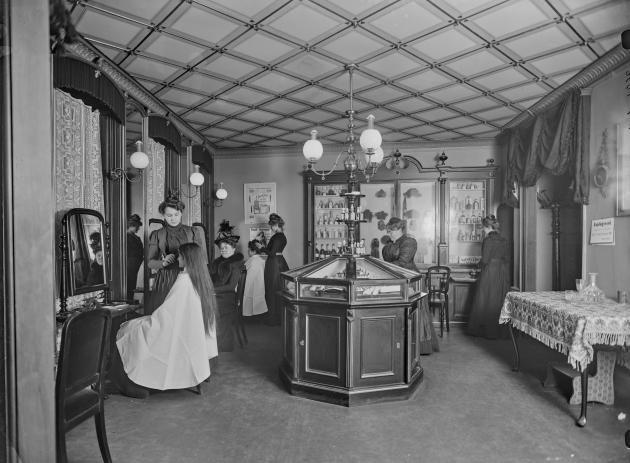
Photo: Peter Elfelt
Hair ornaments are on display in the octagonal display case in the middle of the room, and in the glass cabinet behind there are bottles of hair lotion and hair dye. The business carries Rausch's Haarwasser, a product developed by Josef Wilhelm Rausch (1868-1935), as you can see from the poster on the wall. Rausch actually launched the first liquid shampoo on the market, but it probably had not happened at this time or was too modern for this salon. There are no sinks, but small tables with mirrors and perhaps also some reading material for the customers.
The salon also carried hair dye. Here was the producer Herman Janke, who boasted in German newspapers about having the world's best hair colour
. It could give gray hair its true
colour back again. It was even recommended by doctors who claimed that it had a refreshing effect on the hair nerves
.
If you did not want to dye your hair but still wanted other tresses, as you can see, there was a wide selection of wigs for sale.
Tight enough
It was not just at the hairdresser's the women spent time and money to live up to the beauty ideals of the time. Clothing was also important, and here the corset played an essential role.
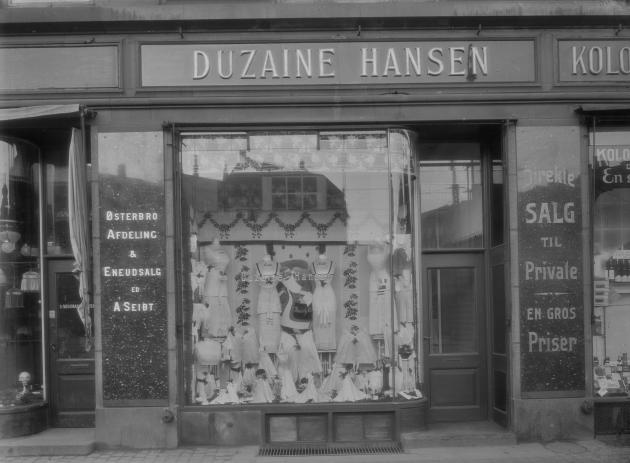
Photo: Peter Elfelt
Christmas is approaching and the presents must be bought. The corset retailer Duzaine Hansen advertises with Useful Christmas gifts
, a debatable subject. There is no doubt that many would like to have their bodies laced in. The beauty ideal of the time dictated that the woman should have a waist, and this could be done with a corset, but it was an uncomfortable business.
Certainly corset fashion had become more human. In the 1880s, the waist had to be tightened so much that it was difficult to breathe. A high rear was given to women by the intervention of a pillow. However, with the development of medical science, gymnastics and the women's movement, new ideals of beauty were also created. The doctor Johannes Frisch warned in the book Health and Women's Dress in 1887 against the crinoline, a corset that could do permanent damage. It tightened the ribcage, gave bent ribs, a protruding abdomen, constipation and lack of blood circulation.
In the journal Kvinden og Samfundet, the champions of the women's cause argued vigorously for the development of a reform dress without corsets, indeed several, because you had to dress for work, sports, skating, everyday life and parties. Before the Nordic Industrial, Agricultural and Art Exhibition in 1888, a committee was set up, which called for proposals for different kinds of corsetless dresses, which should enable women to breathe and move with more than small steps.
The reform dress never really caught on, but as you can see from the picture, the mutilation stopped. Duzaine Hansen advertises in Nationaltidende in 1900 with Reform, Normal and Sports Corsets
, and the corsets in the window do not have inhuman laces.
Lunch at Anti Automaten
Anti Automaten, what the heck is that? An enterprise that fought industrialisation and the increasing mechanisation of society? Yes, actually. In 1899, a number of so-called Automat cafes began to appear in the city, where customers could withdraw their food from vending machines. Completely without personal service.
The phenomenon came from Germany, where the German chocolate manufacturer Ludwig Stollwerck and the inventor Max Sielaff presented an "Automatpavillon" in 1886, where visitors could get food and drink via the machines.
The first Automat cafe opened in Copenhagen in 1899 on Amagertorv, and here they advertised that the busy businessman could eat lunch quickly and efficiently. You could likely also take the food with you, so neither shops without staff, fast food nor take away are new phenomena.
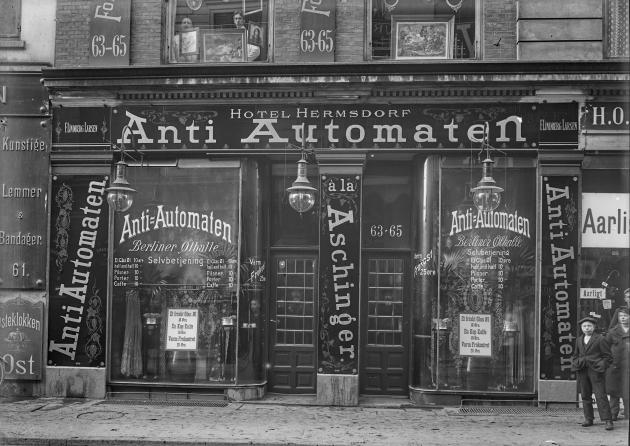
Photo: Peter Elfelt
The Anti Automat cafe was, as the name suggests, was created as a reaction to the Automat cafe. Here they went to battle against the jabbering. Again, the inspiration came from Germany. On the sign on the right it says A la Aschinger, so people could see that it was created in the image of one of the big German chains. On the facade and in newspapers such as Folkets Blad, it was advertised as a Berliner Beer Hall
.
You had to introduce lunch dishes directly from the hot table, self-service and have no expectation of tips in order to be competitive. You could be served a glass of beer or a porter for 10 øre - and that was actually the same as in the Automat cafe.
The cafes were typical metropolitan phenomena. Lunch was a well-deserved break in the middle of the long working day. In the cafes, you could make contact with other people, eat easily together and thus create a bit of homely cosiness during the short meal break.
In the photograph of the Anti Automat cafe, you can clearly see that the staff knew that a photographer was visiting. If you zoom in, you can see small faces in the windows. A young waiter even stands with a tray of cups and looks out just to emphasise that real people actually work here.
Would you like to see more of Elfelt's photographs of the city?
In Digital Collections you can find many more of Peter Elfelt's photographs of the cityscape. Here you can drop by the pharmacy, inside the tobacconist's shop or take a stroll through the streets.
